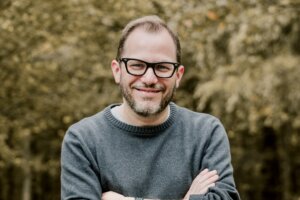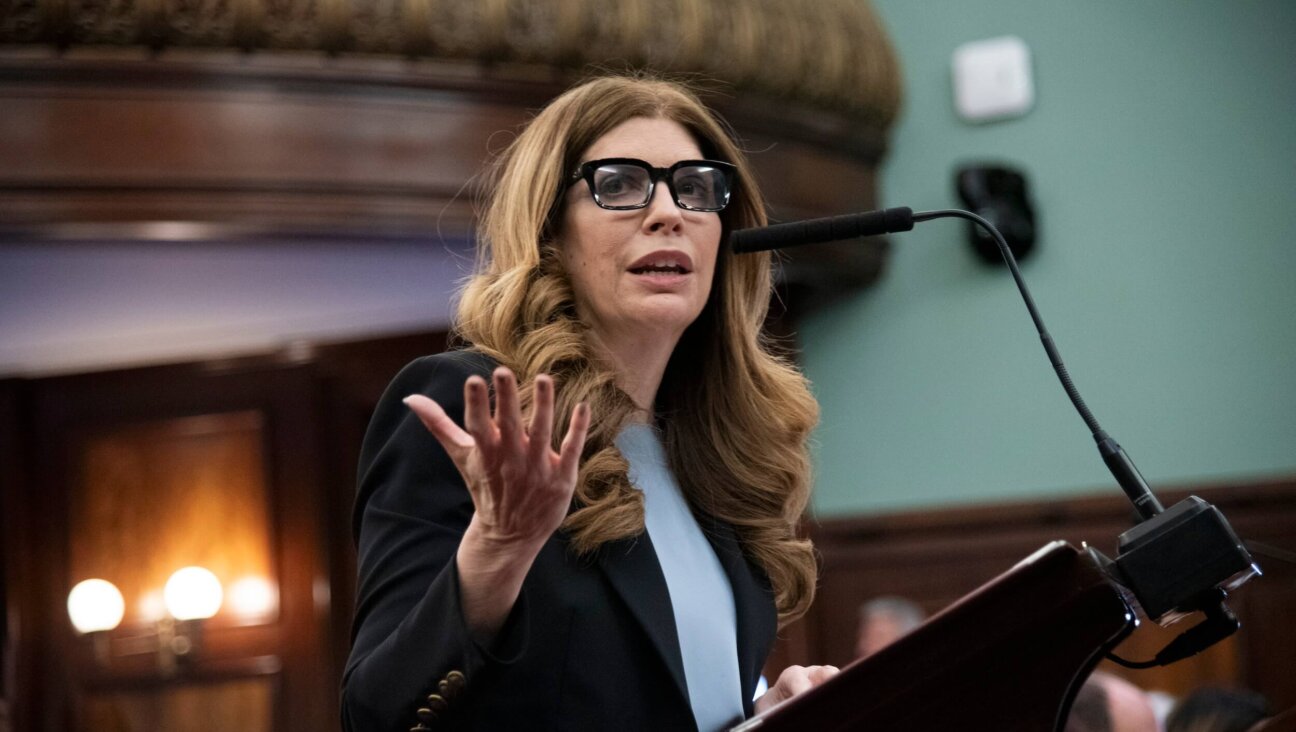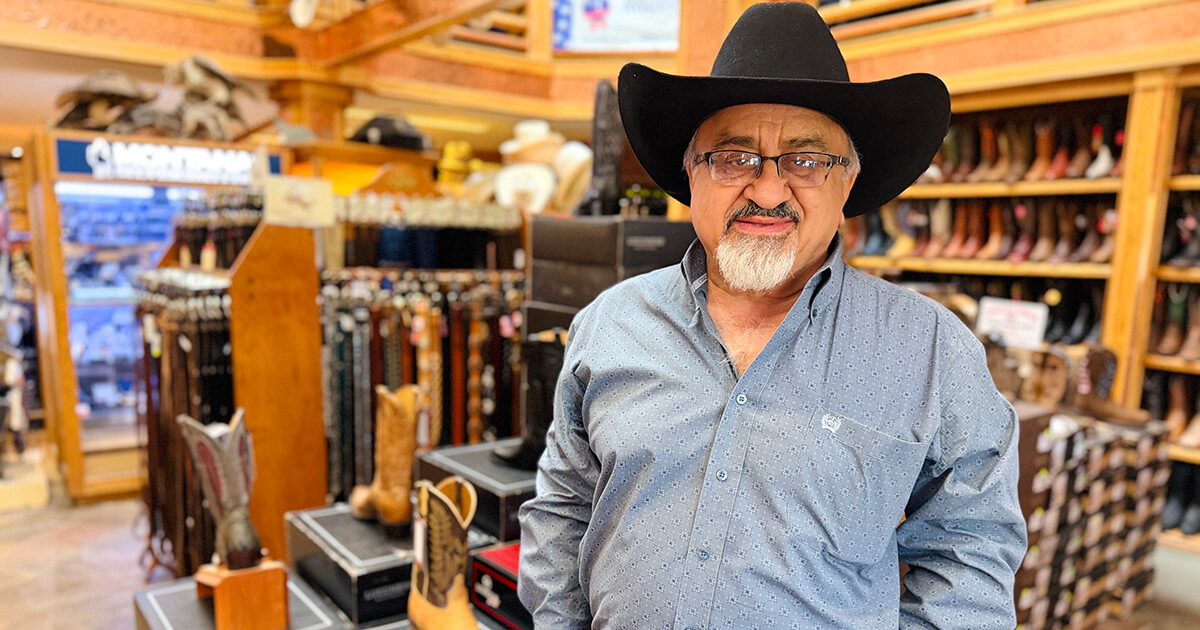‘The tree is still growing’: At the site of the deadliest antisemitic attack in U.S. history, Tree of Life breaks ground on its future
Doug Emhoff, Gov. Josh Shapiro, Wolf Blitzer and others helped break ground on a new facility that will house a sanctuary and a museum about antisemitism

Audrey Glickman, who survived the 2018 attack at Pittsburgh’s Tree of Life synagogue, in front of a hull of the building at a groundbreaking ceremony for a new complex to be built on the site. Photo by Benyamin Cohen
Audrey Glickman is revisiting history.
The diminutive 67-year-old is standing on the site of the deadliest antisemitic attack in U.S. history. On this very spot — on Oct. 27, 2018 — a shooter burst into Shabbat morning services at the Tree of Life synagogue.
Glickman is a survivor of the attack. She was leading services when she heard the rat-a-tat of gunfire. She grabbed congregant Joe Charny, then 88, and raced up the stairs and into a small room filled with bags of clothes to be donated to those in need. Together, huddled and scared, they hid under their prayer shawls.
She’s returned to the scene of the crime this Sunday for what she, and many others, is a turning of the page. Most of the building has been demolished to make way for something new: A facility that will house a museum about the history of antisemitism in America, classrooms for lectures about countering hate and a space for kosher-catered events. And, of course, the sanctuary for Tree of Life.
“The congregation is like a big tree and giant limbs have recently been chopped off, but the tree is still growing,” said Glickman, who was sporting a glass teal necklace featuring a tree of life, a metaphor for the Torah.
The history of the congregation has been keeping Glickman busy as of late. For weeks, she has dug through boxes of photos for a montage to show at an upcoming celebration of her synagogue’s 160th anniversary. That’s a lot of photos to sift through: The shul opened when Abraham Lincoln was president.
In one hand, Glickman is nursing a cold cup of water to combat the sweltering heat. In the other is a tiny silver briefcase in which she’s carrying a shofar, often associated with Rosh Hashanah and new beginnings. Today, she will blow it to open the groundbreaking ceremony in front of 400 invited guests and dignitaries.
It’s been nearly six years since that fateful fall morning. The shooter was sentenced to death last summer, the most prominent person to be condemned to die for antisemitic crimes since Adolf Eichmann. The congregation, ever resilient through decades of change, is ready for its next chapter.
“We are more than just the shul that was shot at, and we’re more than just the group of people who died there,” she told me before the ceremony. “As much as we miss them, we miss them more for their lives than we do for the way they died.”
Light amid the darkness
Walk through Squirrel Hill, known as Mister Rogers neighborhood and home to many of Pittsburgh’s 50,000 Jews, and you’ll see “No Place for Hate” signs dotting the street corners. A Star of David in a Starbucks window, first painted in the aftermath of the 2018 attack, remains.
CNN’s Wolf Blitzer, whose grandparents died in the Holocaust, was the master of ceremonies at the event, at the corner of Shady and Wilkins Avenues. “If I come back on a Shabbat morning,” he told the crowd, “I hope I get an aliyah.”
CNN’s @wolfblitzer welcomed everyone to the groundbreaking of the new Tree of Life synagogue in Pittsburgh. He also spoke of his family’s Holocaust history. pic.twitter.com/6s2kDGPF5g
— The Forward (@jdforward) June 23, 2024
Doug Emhoff, the second gentleman of the United States and who has played an integral role in the Biden-Harris administration’s national strategy to counter antisemitism, has visited this site several times since the 2018 massacre. He came after the Hamas attack on Oct. 7 which, he told the crowd on Sunday, led to a “crisis of antisemitism” and “is a poison on our democracy.”
On Chanukah, this past December, Emhoff said he lit a menorah at the vice president’s residence that was loaned to him from Tree of Life. “The menorah is described as the vanquishment of darkness by light,” Emhoff said, “which is exactly what we are doing here today.”
Following up on the theme of light, Pennsylvania Gov. Josh Shapiro said, “My bracha, my prayer, is that this be a place of light and enlightenment.” He pledged that the state will help with whatever it can in the rebuilding of Tree of Life. “This is a debt we owe to the people whose lives were cut short when they davened here,” Shapiro said, using the Yiddish word for prayed.
The new facility’s defining feature will be a glass skylight that extends the length of the building.

‘Our story doesn’t end with victimhood’
The new 45,000-square foot complex was designed by Daniel Libeskind, the star architect behind the Jewish Museum in Berlin and the reconstruction of the World Trade Center site. Libeskind, who was born in Poland, said that this project is personal for him because he and his family immigrated to the United States thanks to HIAS, the Hebrew Immigrant Aid Society.
In the weeks leading up to the attack, and even in the early hours of that Shabbat morning, the shooter posted online about his hatred of the Jewish nonprofit that helps refugees. Dor Hadash, one of the three congregations that used the Tree of Life building, had participated in a HIAS event the previous week.
“This building is about everything that I am: an immigrant, a Jew, an architect,” Libeskind told me after the event. “And it’s something that brings life after this terrible event in our time, particularly when there’s so much antisemitism in America and around the world.”
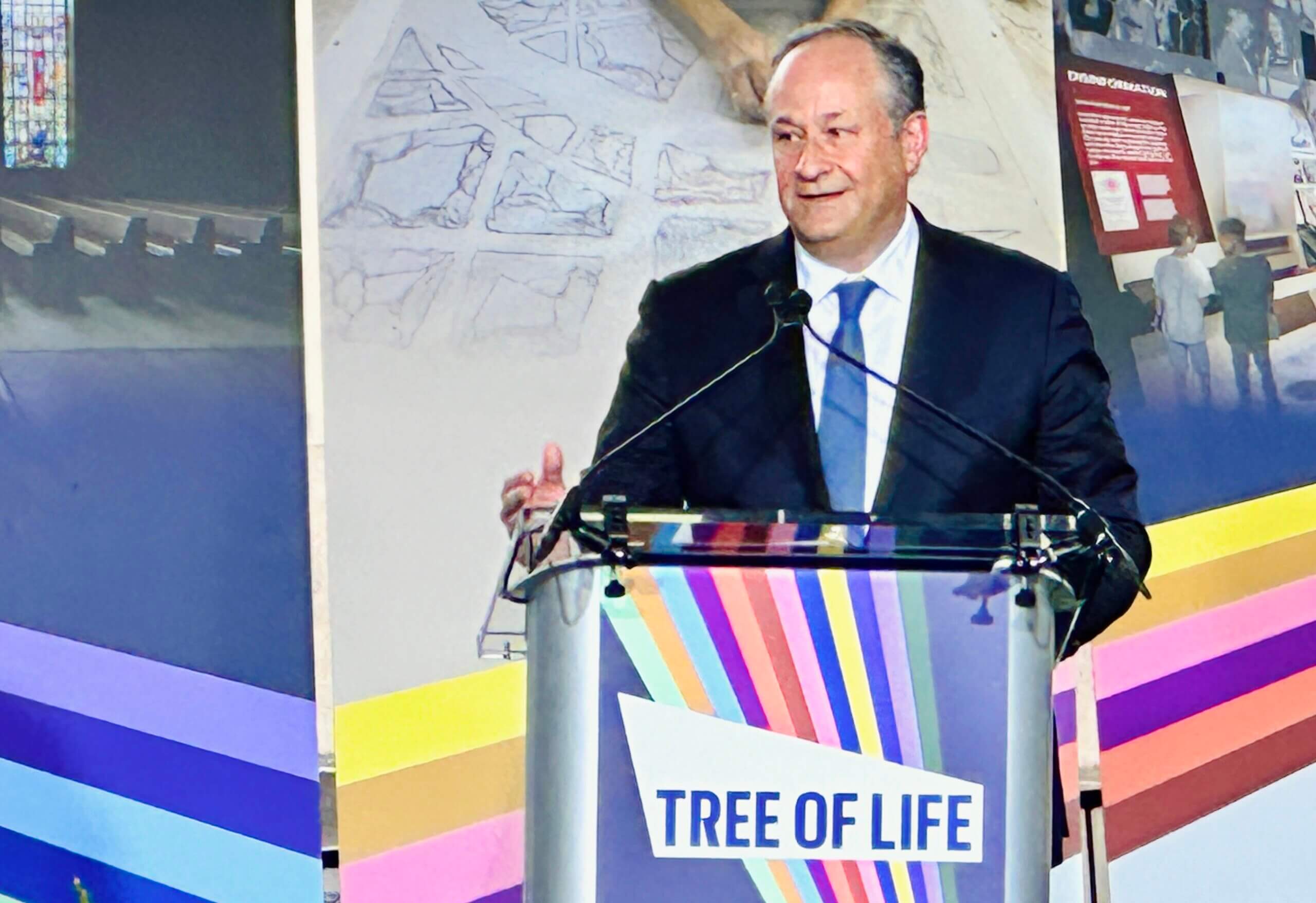
The construction that began on Sunday should be complete by the end of 2026. Carole Zawatasky, CEO of a new nonprofit called The Tree of Life, expects that once it opens, the new antisemitism museum will become a destination that attracts a projected 70,000 visitors annually for lectures and field trips from student groups across the country.
“It is so important that our story doesn’t end with victimhood,” Zawatasky said. “Truly, what is the most Jewish thing to do? We get up and we recreate.”
‘We’ve got a lot of yahrzeit plaques’
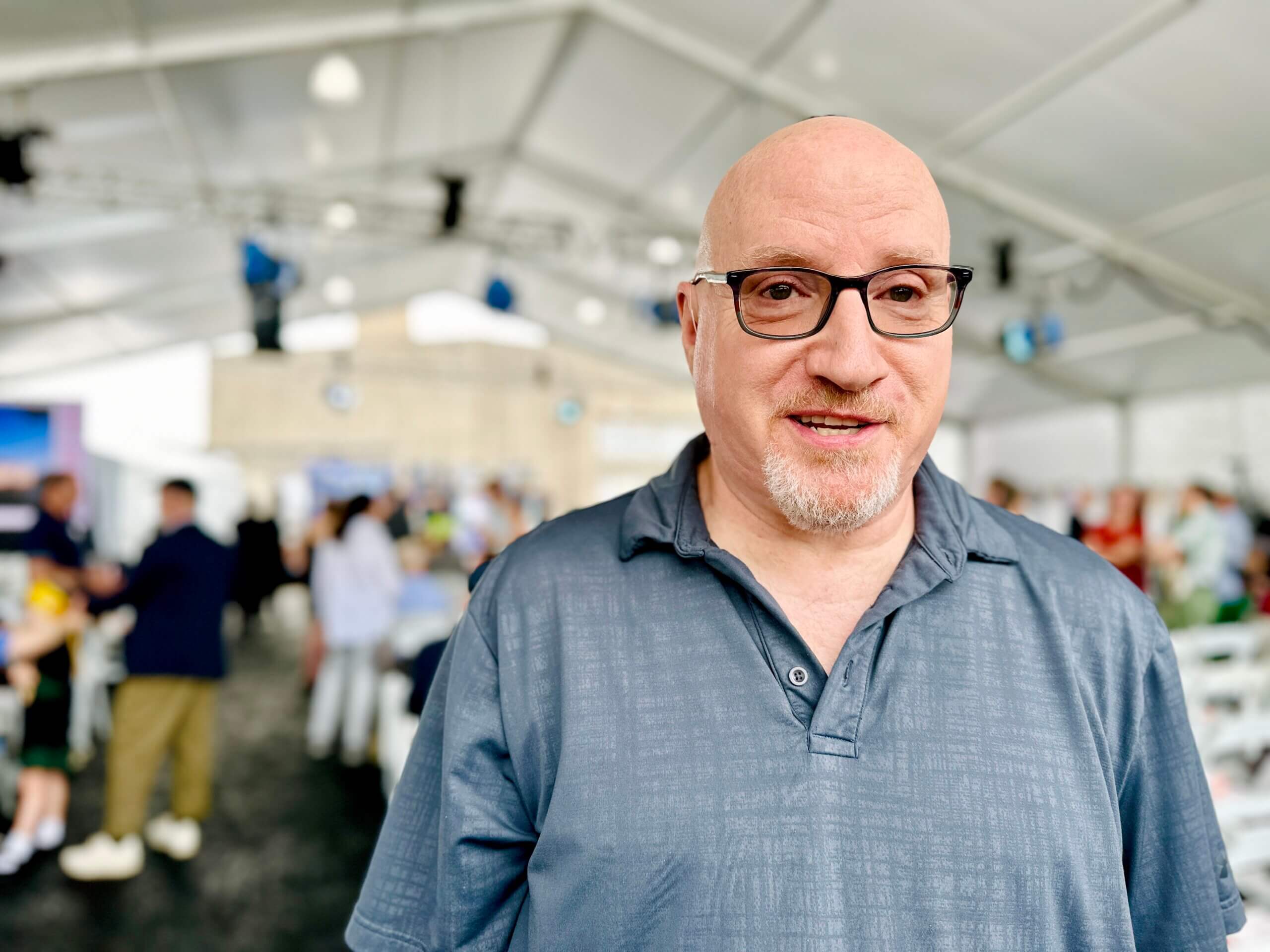
Stephen Weiss was at Tree of Life the morning of the shooting. When he heard the gunfire, he remained in the sanctuary. The rabbi was reciting kaddish, and Weiss, the 10th person, didn’t want to break up the minyan. He eventually dove behind a pew and then ran downstairs to warn the others.
He said Sunday that he has no PTSD coming back to the scene of the crime. “I think it’s really past time for us to move forward,” said the 65-year-old retired teacher.
Weiss and fellow survivor Glickman travel the country screening an HBO documentary about the shooting and answer questions afterwards.
Glickman has been juggling those duties along with prepping for Tree of Life’s birthday this week, which will be a private event only for members of the shul. She’s also cleaning out the old building so construction can begin. “Anything that can be reused, was taken out,” she said. “Anything that could be ground up was ground up and put into the foundation. So we’re not wasting anything, but we’re not having people take keepsakes of a murder site. Because we thought that would be kind of disrespectful.”
The new sanctuary will have electronic yahrzeit plaques to memorialize deceased members of the congregation, so she’s trying to return the old plaques to the appropriate families. “The congregation is 160 years old, so we’ve got a lot of yahrzeit plaques,” she laughed.
I asked her if the shul has taken on any new rituals since the attack.
“Yes,” she replied. She said that the congregation regularly invites clergy from other faiths to talk about the weekly Torah portion. “We learn about them,” she said, “and they learn about us.” These meetings have blossomed further: A reverend joined Tree of Life’s Purim spiel, playing Uncle Mordy, while the rabbi played Moses at a church’s Christmas pageant. “It’s delightful,” Glickman said with a smile.
The groundbreaking ended with family members of the victims, survivors, first responders, politicians and others joining on stage for a ceremonial breaking of a glass — usually associated with the conclusion of a Jewish wedding. The pieces were collected and will ultimately end up in mezuzah cases that will guard the doors of the new building.
Said Zawatasky: “It will forever be a reminder of our obligation to pick up the shards of our broken world.”
